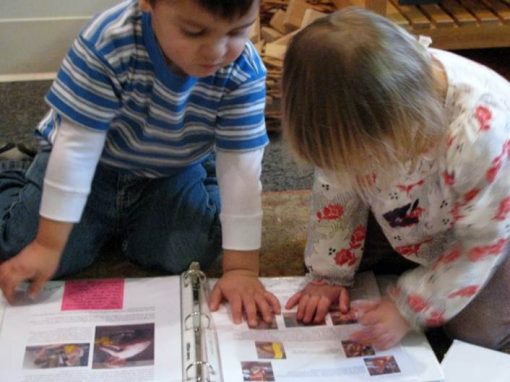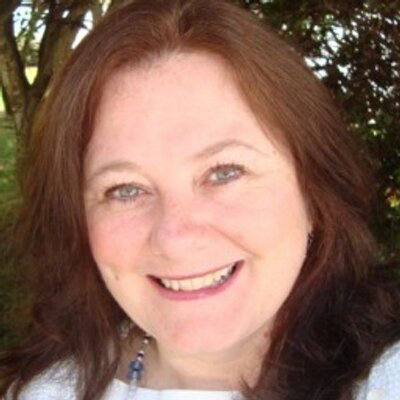
What makes a Story a Learning Story?
[et_pb_section bb_built=”1″ admin_label=”section” inner_width=”auto” inner_max_width=”none”][et_pb_row admin_label=”row” make_fullwidth=”on” use_custom_width=”off” width_unit=”on” use_custom_gutter=”off” allow_player_pause=”off” parallax=”off” parallax_method=”on” make_equal=”off” parallax_1=”off” parallax_method_1=”off” parallax_2=”off” parallax_method_2=”off” background_position=”top_left” background_repeat=”repeat” background_size=”initial” module_class=” et_pb_row_fullwidth et_pb_row_fullwidth” width=”89%” width_tablet=”80%” width_last_edited=”on|desktop” max_width=”89%” max_width_tablet=”80%” max_width_last_edited=”on|desktop”][et_pb_column type=”4_4″][et_pb_image src=”https://hilltopcc.com/wp-content/uploads/2017/04/PreschoolersReadingJournal.jpg” alt=”Two children reading their class journal on the couch. Example of learning story.” title_text=”Two children sitting and reading their class journal at Hilltop Children’s Center” animation=”off” sticky=”off” use_border_color=”off” border_color=”#ffffff” border_style=”solid” _builder_version=”3.22.4″ z_index_tablet=”500″ /][et_pb_text background_layout=”light” use_border_color=”off” background_position=”top_left” background_repeat=”repeat” background_size=”initial” _builder_version=”3.0.100″]
by Sarah Felstiner, Curriculum Director, Hilltop Children’s Center
Published on April 20th, 2017
Last modified on February 10th, 2018
For almost ten years now, educators at Hilltop Children’s Center have been exploring possibilities and practices around writing Learning Stories. And to be perfectly honest, there’s a good chance that we’ve accidentally repurposed or mis-used that term. What is a Learning Story, really? And what distinguishes a Learning Story from other kinds of written documentation?
There have been two particularly strong influences on Hilltop’s growing understanding of Learning Stories, and their potential for supporting our curriculum and deepening our connection with children and families. The first is what we’ve learned from schools in Aotearoa/New Zealand, where Learning Stories are an expected model for reflection and assessment. Wendy Lee is one of the people who helped establish Learning Stories as part of the Te Whāriki Curriculum Framework, and is co-author of the book Learning Stories: Constructing Learner Identities in Early Education. See below for more information about a full-day discussion of Learning Stories that Wendy will be leading next month, through Hilltop’s Educator Discussion Series.
Another guide in our exploration of Learning Stories has been Tom Drummond, an educator local to Seattle who developed a framework for writing Learning Stories that we find approachable, flexible, and inspiring. Tom has been at Hilltop often, to work with our own faculty, and to facilitate events in our Discussion Series. We are grateful to both Tom and Wendy for inspiring our work, and for their forbearance with how creatively we’ve interpreted their guidance…
Here at Hilltop, we tend to use the term “Pedagogical Documentation” when we’re writing about activities that a small or large group of children took part in. And we tend to use the term “Learning Story” when we write about a learning moment for a specific individual. For example, I might write a piece of “Pedagogical Documentation” about how five children collaborated on a block tower that almost reached the ceiling! And I might write a “Learning Story” about the time that Josie (age 2) worked on her own for almost 20 minutes to get a stack of 4 blocks to stay upright, and then declared “Did it!”
At Hilltop, we use supportive protocols to guide our writing of Pedagogical Documentation and of Learning Stories. When we’re writing a piece of Pedagogical Documentation, about group work and play, we make sure that it includes the following four elements:Tell the Story
- Tell the Story
- Reflect on the Story
- Begin a Dialogue with Families
- Next Steps and Further Plans
While we don’t specify how long each section should be, or even the order in which they should appear, we do take care to include each of those components in some way.
 Similarly, when we write a Learning Story about an individual child, we include four distinct sections:
Similarly, when we write a Learning Story about an individual child, we include four distinct sections:
- What happened
- What it means
- Opportunities and Possibilities
- Family Response
And again, each educator’s writing style, and even each particular story, may have a different look, a particular length, a specific style. We value that variety, while still relying on the basic structure to ensure that the story is accomplishing what we hope it will.
As you can see, these two formats for written documentation have quite similar components. So what distinguishes a Learning Story from other kinds of documentation? Not all programs use the group/individual differentiation that Hilltop does – that’s just a labeling convention that we’ve adopted. Perhaps a Learning Story could be written about an individual, or a group? Perhaps any story about children’s learning is, by definition, a learning story? I think that may be true…and I also think there are some qualities that characterize an effective Learning Story.
- Learning Stories are personal: written by a thinking, feeling person, describing their authentic wonder and wonderings. Learning Stories are often written to the child or children featured in the story.
- Learning Stories are meaningful: beyond just reporting on events that happened, they uncover possible layers of complexity. Learning Stories describe the learning that might be happening for the children and adults in the story.
- Learning stories are readable: avoiding jargon and rhetoric, and possibly even written with a child audience in mind. Learning Stories are stories…the kind you might even want to read aloud.
I’ll leave you with something Tom Drummond said during a recent visit to Hilltop. He was speaking about the power of Learning Stories to impact a child’s self-concept, to help a child come to better understand herself or himself as a learner. When I think about what makes a story a Learning Story, these are the words that resonate:
“You learn who you are through the people that you love telling you what they love about you.”
– Tom Drummond
[/et_pb_text][et_pb_text background_layout=”light” use_border_color=”off” background_position=”top_left” background_repeat=”repeat” background_size=”initial” _builder_version=”3.0.100″]
What’s Next?
 Documentation and pedagogical narration support the learning experiences in your program, through the process of observing, recording, and – individually and collectively – interpreting those ordinary (and extraordinary) moments in a child’s life. Documentation also provides a means for educators to monitor the effectiveness of their teaching, and can even lead us to change our thinking and our practice. Pedagogical documentation makes learning visible for all involved. By noticing what is happening, and reflecting on children’s perspectives, educators are able to recognize children’s strengths and better appreciate their learning. The critically acclaimed author and Canadian scholar, Dr. Laurie Kocher, whose works includes government documents such as Understanding the BC Early Learning Framework: From Theory to Practice and books such as Journeys: Reconceptualizing Early Childhood Practices Through Pedagogical Narration, will be joining us from Vancouver, BC on Saturday February 24th for a session titled: “Making Learning Visible” Documentation and Pedagogical Narration. Dr. Kocher will explore how documentation and pedagogical narration can help you meet your program’s vision and goals while illuminating children’s learning experiences. Because this event will take place at the NAREA Wonder of Learning Exhibit, participants will also get to see stories of children’s work in the schools of Reggio Emilia, Italy, offering another example of how documentation has the possibility to make children’s learning visible. For more information on this session visit: www.hilltopcc.com/visible
Documentation and pedagogical narration support the learning experiences in your program, through the process of observing, recording, and – individually and collectively – interpreting those ordinary (and extraordinary) moments in a child’s life. Documentation also provides a means for educators to monitor the effectiveness of their teaching, and can even lead us to change our thinking and our practice. Pedagogical documentation makes learning visible for all involved. By noticing what is happening, and reflecting on children’s perspectives, educators are able to recognize children’s strengths and better appreciate their learning. The critically acclaimed author and Canadian scholar, Dr. Laurie Kocher, whose works includes government documents such as Understanding the BC Early Learning Framework: From Theory to Practice and books such as Journeys: Reconceptualizing Early Childhood Practices Through Pedagogical Narration, will be joining us from Vancouver, BC on Saturday February 24th for a session titled: “Making Learning Visible” Documentation and Pedagogical Narration. Dr. Kocher will explore how documentation and pedagogical narration can help you meet your program’s vision and goals while illuminating children’s learning experiences. Because this event will take place at the NAREA Wonder of Learning Exhibit, participants will also get to see stories of children’s work in the schools of Reggio Emilia, Italy, offering another example of how documentation has the possibility to make children’s learning visible. For more information on this session visit: www.hilltopcc.com/visible
[/et_pb_text][et_pb_divider color=”#ffffff” show_divider=”off” divider_style=”solid” divider_position=”top” hide_on_mobile=”on” height=”10″ disabled_on=”on|on|off” /][et_pb_text background_layout=”light” use_border_color=”off” background_position=”top_left” background_repeat=”repeat” background_size=”initial” _builder_version=”3.0.100″]
Sarah Felstiner is the Curriculum Director at Hilltop Children’s Center, where she has worked since 1995. Recognized as a Master Leader by Exchange Press, Sarah strives to offer the early childhood field compelling and accessible models for teaching and learning, rooted in strong values and built upon infrastructures that support reflective practice for both children and adults. When she’s not at Hilltop, Sarah can often be found playing the flute or guitar, or following the Iditarod Sled Dog races!
[/et_pb_text][et_pb_comments show_avatar=”on” show_reply=”on” show_count=”on” background_layout=”light” use_border_color=”off” border_color=”#ffffff” border_style=”solid” custom_button=”off” button_letter_spacing=”0″ button_use_icon=”default” button_icon_placement=”right” button_on_hover=”on” button_letter_spacing_hover=”0″ border_radii=”on||||” button_text_size__hover_enabled=”off” button_text_size__hover=”null” button_one_text_size__hover_enabled=”off” button_one_text_size__hover=”null” button_two_text_size__hover_enabled=”off” button_two_text_size__hover=”null” button_text_color__hover_enabled=”off” button_text_color__hover=”null” button_one_text_color__hover_enabled=”off” button_one_text_color__hover=”null” button_two_text_color__hover_enabled=”off” button_two_text_color__hover=”null” button_border_width__hover_enabled=”off” button_border_width__hover=”null” button_one_border_width__hover_enabled=”off” button_one_border_width__hover=”null” button_two_border_width__hover_enabled=”off” button_two_border_width__hover=”null” button_border_color__hover_enabled=”off” button_border_color__hover=”null” button_one_border_color__hover_enabled=”off” button_one_border_color__hover=”null” button_two_border_color__hover_enabled=”off” button_two_border_color__hover=”null” button_border_radius__hover_enabled=”off” button_border_radius__hover=”null” button_one_border_radius__hover_enabled=”off” button_one_border_radius__hover=”null” button_two_border_radius__hover_enabled=”off” button_two_border_radius__hover=”null” button_letter_spacing__hover_enabled=”on” button_letter_spacing__hover=”0″ button_one_letter_spacing__hover_enabled=”off” button_one_letter_spacing__hover=”null” button_two_letter_spacing__hover_enabled=”off” button_two_letter_spacing__hover=”null” button_bg_color__hover_enabled=”off” button_bg_color__hover=”null” button_one_bg_color__hover_enabled=”off” button_one_bg_color__hover=”null” button_two_bg_color__hover_enabled=”off” button_two_bg_color__hover=”null” /][/et_pb_column][/et_pb_row][/et_pb_section]
